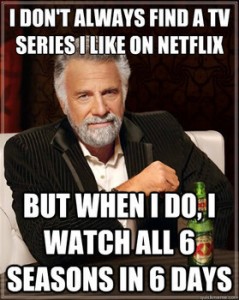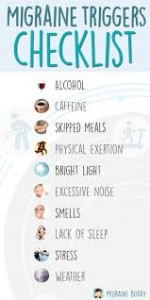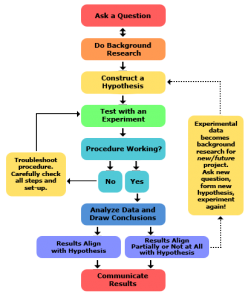 Space junk refers to space debris, junk, waste, trash, or litter is that the collection of defunct man made objects in space-old satellites, spent rocket stages, and fragments from disintegration, erosion, and collision, including those caused by debris itself. Generally speaking, the source of space debris falls into four major categories. Ever since the launch of the first spacecraft Vanguard by the United States in 1958, a large quantities of man-made crafts have been sent into the space to help humans explore the universe. Union of Concerned Scientists 16 July 2009. That is to say, uncountable dead spacecraft remained defunct in the space forever. Besides, a lot of space debris derives from lost equipment during space missions either from astronauts or man-made crafts. More fragments are the products of explosion due to rocket upper stage, namely boosters. The last debris source comes from the test of anti-satellite weapons; the disintegration of a satellite by missile will create dangerous space debris that would hardly return to Earth. Altogether, as a whole, according to NASA’s statistics recently, there are about 4000 satellites and rocket residues in operation in earth orbit, besides there are about 6000 pieces of space junk that can be seen and tracked, space junk moves with highly fast speed, which poses a fatal threat to unmanned and manned spacecraft, space shuttle missions, international station, Earth and so on! Throughout history, humans have eye witnessed many space junk accidents.
Space junk refers to space debris, junk, waste, trash, or litter is that the collection of defunct man made objects in space-old satellites, spent rocket stages, and fragments from disintegration, erosion, and collision, including those caused by debris itself. Generally speaking, the source of space debris falls into four major categories. Ever since the launch of the first spacecraft Vanguard by the United States in 1958, a large quantities of man-made crafts have been sent into the space to help humans explore the universe. Union of Concerned Scientists 16 July 2009. That is to say, uncountable dead spacecraft remained defunct in the space forever. Besides, a lot of space debris derives from lost equipment during space missions either from astronauts or man-made crafts. More fragments are the products of explosion due to rocket upper stage, namely boosters. The last debris source comes from the test of anti-satellite weapons; the disintegration of a satellite by missile will create dangerous space debris that would hardly return to Earth. Altogether, as a whole, according to NASA’s statistics recently, there are about 4000 satellites and rocket residues in operation in earth orbit, besides there are about 6000 pieces of space junk that can be seen and tracked, space junk moves with highly fast speed, which poses a fatal threat to unmanned and manned spacecraft, space shuttle missions, international station, Earth and so on! Throughout history, humans have eye witnessed many space junk accidents.
This thesis is going to explore three possible solutions in terms of the disposal of space junk as proposed in my topic proposal. First of all, with a brief background of the cause of space junk and current situation of it, I will state solution one which is changing spacecraft’s working orbit to avoid space junk along with its positive and negative results, then analysis and conclusion will be drawn accordingly. In addition, solution two discusses a kind of military technology by means of launching missiles to explode space debris with relevant positive and negative factors, followed by analysis and conclusion. What’s more, solution three pays attention to the natural process of burning space junk while going through the atmosphere with both positive and negative effects, attached with analysis and conclusion. In the end, in comparison with solution two and three, my final analysis is in favor of solution one. A reasonable final conclusion also will be drawn to bring the research essay to an end.
For solution one, nowadays, Space junk can be monitored and tracked, so out of three proposed solutions to deal with space junk, the first one lies in the method of changing spacecraft’s working orbit to avoid potential risks. ESA, October 2012). With the fast development of space industry, scientists have invented many precise instruments such as astronomical telescopes and space models, which enable launchers to detect actual positions and rotating orbits of different debris floating in the space, thus preventing large man-made space shuttles, rockets, crafts from being hit or hitting space junk. To be positive, economically, monitoring or tracking space debris’ orbit is a sort of saving of time, money and labor. It only requires the observation of the location of space junk in a certain orbit via telescopes and calculation of upcoming collision between a space craft and debris. Then before the launch of a space mission object, the orbit can be altered to stay away from hazardous space trash. For negative side, without being able to remove space litter, changing a spacecraft’s orbit serves only as a palliative method. For as time goes by, more space missions will take place in the near future, that is to say, inevitably, an increasing number of space trash is to accumulate. In the long run, a space crowded with large quantities of space junk will be a disaster to space mission launches.
Plus, solution two as a perfect combination of military weapons and space science, some advocate that launching missiles to destroy debris might be a new solution to look at. As a tube-shaped weapon that travels to reach its target, missiles are designed to lock on any moving target with almost 100 percent precision. Not long ago, in 2007, China launched a missile to destroy a weather satellite named Fengyun-1C that had already become out of service for so long, but at the same time (click here for specific information). Solution two is great in technical aspect that to eradicate large defunct satellites by means of missile explosion is no doubt a perfect resort. Satellites share similar orbits and have a direct impact on the orbit of other satellites that are followed. With the explosion of missile, these dead satellites fall apart and the broken pieces have a fat chance of deviating from original orbits. Unfortunately, shattered pieces of satellite fragments are not likely to be neglected at the same time. (David, 2 February 2007). Vividly if seen from a 3D picture, orbit planes are filled with debris from satellite disintegration. As a vicious circle, debris of satellite continues to rotate.
As for solution three, some debris tends to be burnt out into ashes when they travel across the atmosphere because of the atmosphere’s highly scorching heat. When space junk goes across the atmosphere at an amazingly fast speed, the force of friction between the junk and the atmosphere generates so astonishingly high temperature that space junk melts and disintegrates in no time. Truthfully, rather than intervention, humans don’t need to get involved in the process of disposal. In this way, all necessary actions that are supposed to take can be omitted, what scientists have to do is nothing but sit and wait for the friction to burn everything into particles. Seemingly, humans don’t have to engage in the course of the removal of space trash, but as a matter of fact, waiting without taking any actions to cope with space litter is not going to make any difference.
Finally, in comparison with solution two and solution three, solution one has an advantage over two and three in light of positive factors. While the collision of missile explosion will only incur more debris and depending on the atmosphere to burn out space junk is somewhat equal to chronic suicide. The only available solution now is taking precautions beforehand to pre-calculate the orbit of debris so as to avoid the collision. clicking here to see NASA’s solution.
In conclusion, due to the limit of space technology at present, except for avoiding space junk, there is no the so called solution to remove or take back roaming debris. Unlike the complication of solution two and the inaction of solution three, solution one is superior and effective as a perfect saving of time, money and labor. But I will be looking forward to the revolution of super-advanced methods in the future to wipe space junk away and create a clean and safe space. 
Here is a link to see the space junk.






 Why are savants, like Kim Peek, so smart? Well, Adam Piore expertly explicates the reasons behind the answer in his article post right
Why are savants, like Kim Peek, so smart? Well, Adam Piore expertly explicates the reasons behind the answer in his article post right 





































